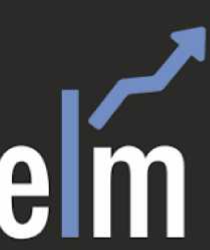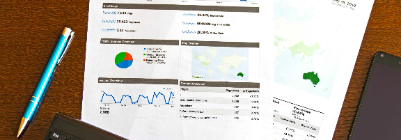With markets facing headwinds, should you turn to hybrid funds? Know which type of hybrid fund is suitable for you With a potential market slowdown looming on the horizon, experts are increasingly advising investors to turn to hybrid funds. Hybrid funds, including dynamic, balanced, and multi-asset allocation funds, offer diversification benefits to first-time investors amidst volatile markets. However, they are not risk-free, and careful selection depending on the investor's risk profile is crucial
The stock market joyride of recent years is over. Elevated stock prices have finally cracked under the pressure of muted earnings growth and concerns over US President Donald Trump’s policy shifts. Unlike 2020, which saw a swift, sharp market slide, the ongoing correction is playing out slowly. The possibility of a prolonged, drawn-out correction cannot be ruled out this time. This means your portfolio is in for some pain if it’s not armed with adequate defences.Budget with ET
Budget Highlights: Gareeb, youth, annadata and naari feature in Budget. What about taxes?
New vs Old tax regime: Here's a decoder to help you choose the right one
Will you pay more under new tax regime or old? Calculate here
Asset allocation is the best defence in volatile markets. Diversifying across asset classes shields investors from downturns. Experts favour hybrid strategies, including multi-asset allocation, dynamic asset allocation, balanced hybrid, and equity savings funds. These strategies now face a real test. How do you choose the right hybrid fund to navigate the storm, and what can you expect from it?Not a magic pill
The hybrid fund space has grown in popularity, especially in the past few years. This is mostly due to the unfavourable change in taxation of debt funds in Budget 2023 that sparked an exodus to more tax-friendly avenues. Most categories of hybrid funds are treated as equity funds for taxation. So gains realised after one year of holding get taxed at 12.5%, with exemption up to Rs.1.25 lakh per financial year. In debt funds, all gains are now taxed at the investor’s slab rate. This tax edge of hybrid funds has seen assets managed under this banner balloon from Rs.4.12 lakh crore in March 2023 to Rs.6.8 lakh crore as in December 2024. “The rise in popularity of hybrid funds can also be seen as part of a broader trend, where investors are increasingly seeking taxefficient, diversified investment strategies, especially in the current volatile market environment,” contends Mansi Kariya, Fund Manager, PPFAS Mutual Fund.Hybrid funds are also perceived as providing a degree of stability to the portfolio.
This is generally true given that these have presence across two or more asset classes that are not correlated. Over longer time frames, these have exhibited much lower volatility than pure equity funds. Many have already shown resilience amid the ongoing market correction. “Even in volatile markets, hybrid funds can help long-term investors stay invested by reducing anxiety around sharp market corrections, allowing them to remain focused on their financial goals,” avers Shlok Srivastav, Co-founder & COO, Appreciate. “Hybrid funds are excellent for first-time investors easing into equities or for those seeking a diversified option in volatile markets,” asserts Mayank Misra, VP, Product Management, Mutual Funds, INDmoney.
However, hybrid funds are no safe havens. “Some investors mistakenly believe that hybrid funds, due to their diversified nature, always offer low risk. While hybrid funds are less volatile than pure equity funds, they can still experience significant fluctuations,” Kariya observes. There is a varying degree of equity exposure in these funds, which invites risk, even if moderately. Within fixed income allocation also, a fund can switch between accrual and duration strategy. So while hybrid funds can help cushion drawdowns in the portfolio, they cannot eliminate market risk. Investors seeking refuge from downside are better off sticking to fixed deposits or debt funds. Bhavana Acharya, Co-founder, Primeinvestor.in, maintains, “Hybrid funds are not substitutes for debt funds. Every time you replace a debt fund with a hybrid fund, remember that you are increasing your equity allocation and risk.”
Pick your fund carefully
Investors don’t have an easy, straightforward choice in hybrid funds. These come in many flavours. A lot of variety exists within categories as well. Returns may look similar over longer time frames, but the paths taken to deliver those returns are quite divergent. So it is critical to know what exactly the fund does and not be guided by past returns alone. “Due to the flexibility in asset allocation and different investment strategies, hybrid funds are not easily comparable. While evaluating these funds, it’s important to focus on the investment objective, risk tolerance, time horizon and management style, rather than just comparing these based on past returns or a single performance metric,” Kariya insists.While hybrid funds are often valuable, these may not be the right fit for your specific needs. Asset allocation is highly personal, and a one-size-fits-all approach may not always be ideal, asserts Rajani Tandale, Senior Vice President, Mutual Fund, 1 Finance. “Investors should assess whether hybrid funds fit their specific investment strategies or if a more tailored asset allocation approach might serve their financial goals better.”
Dynamic asset allocation funds
Dynamic asset allocation funds, also known as ‘balanced advantage’ funds, are the most coveted among hybrid funds. These are often pitched as the ideal option for investors to weather volatile market conditions. Agility in asset allocation is the central investment proposition. Balanced advantage funds shift actively between equity and debt, altering equity allocation between 30% and 80%. These follow a rule-based approach to guide the asset allocation. Each scheme adopts its own set of parameters, typically a combination of valuations, price trends and fundamentals.Hybrid funds have seen assets balloon in recent years
Favourable taxation and diversification benefits have drawn investors to these funds

However, very few dynamic asset allocation funds truly move freely across equity and debt. Most funds maintain an equity allocation above 65% to qualify for the equity taxation. Within this equity allocation, funds use derivatives varyingly to hedge equity exposure and reduce portfolio risk. This derivative exposure can differ widely among funds at any time. Accordingly, outcomes also vary substantially.
Data from Advisorkhoj shows that the difference in average returns of the top quartile ranked funds, relative to the bottom quartile funds in this category, stands at 6.6% and 7.1% over the past three and five years, respectively. According to Primeinvestor, the minimum one-year return in this category varies from -12.28% to -0.1%. One fund has nearly 20% instances of losses over a year’s time frame in the past three years. Your fund pick clearly matters. “While balanced advantage funds may seem appealing due to their flexibility, their reliance on consistent and accurate market predictions can pose challenges for long-term investors,” suggests Srivastav.
These are not ideal for short holding periods of 1-2 years. Equity savings funds, another category of hybrid funds, would be a better fit for this time frame. Dynamic asset allocation funds are best used to take measured risk in long-term portfolios without taking pure equity exposure, experts insist. “They are also a good fit if you have fresh surplus to invest, but are wary of deploying more in equity when the markets seem expensive,” suggests Acharya.
Aggressive, balanced and conservative hybrid funds
While dynamic asset allocation funds bring fluid allocation, a set of plain-vanilla hybrid funds combines equity and fixed income in a narrow band. The equity portion is not actively hedged either. The equity exposure in the funds is governed by the predefined category limits—65-80% for aggressive hybrid funds, 40-60% for balanced hybrid funds, and 10-25% for conservative hybrid schemes. The remaining portion is invested in fixed income instruments.Aggressive hybrid funds are the earliest inhabitants of the hybrid fund space. These were the original ‘balanced’ funds before the more exotic offerings, like the balanced advantage funds and the equity savings funds, came along. These are the second biggest in terms of assets managed, behind dynamic asset allocation funds. As the name suggests, these take higher equity exposure irrespective of the market conditions. Unlike dynamic asset allocation funds that rely heavily on timing the market, these adhere to a disciplined asset allocation. “The fixed allocation in aggressive hybrid funds provides investors with a clear understanding of the fund’s risk-return profile, facilitating alignment with individual financial goals and time horizons,” observes Srivastav. “If you’re looking for higher returns and can handle market ups and downs, aggressive hybrid funds, with up to 75% equity exposure, might be a good fit,” suggests Misra.
Hybrid funds come in varying risk profiles
While these generally cushion against market falls, they are not immune to risk.

However, this inflexibility also places aggressive hybrid funds at the top of the risk spectrum in this category. “These funds are better than pure equity funds during market corrections, but they are among the riskiest within the hybrid space as they are primarily equity with no hedging,” remarks Acharya. This is evident from the performance figures. Even as aggressive hybrid funds have averaged a healthy 16% return over one-year time frames, this has come at the cost of higher volatility. This category boasts a fund with the biggest return among all hybrid funds, and also houses a fund with the biggest loss in this arena.
Divergent outcomes make fund choice critical
Some categories of hybrid funds fetch a range of outcomes, owing to disparate asset mix and varying use of hedging.

At the opposite end of the spectrum are conservative hybrid funds. Running a bias for fixed income, this segment takes the least exposure to equities. The outcomes are also very sedate. These funds boast the least volatility among hybrid funds, along with superior downside returns. However, gains from these funds are very modest. With no tax edge over debt funds, conservative hybrid funds offer no real benefit even for risk-averse investors. Equity savings funds would be a better fit for this risk profile.
Positioned in the middle are balanced hybrid funds. These are the newest entrants in the hybrid fund space, represented by only two funds for now. AMCs can either offer an aggressive hybrid fund or a balanced hybrid fund in their suite of products. Since most AMCs already have the aggressive variant, with its superior tax efficiency, balanced hybrid funds are very few. While the latter are taxed more favourably than pure debt funds, experts don’t see much merit in exploring this route. “For low-risk equity options, equity savings and balanced advantage funds are well-suited and have better tax efficiency. For higher returns with moderate risk, aggressive hybrid and multi-asset allocation will work well,” Acharya summarises.
Multi-asset allocation funds
Multi-asset allocation funds are fast emerging as a preferred choice for many. The category now manages assets worth Rs.1.1 lakh crore, sharply up from Rs.26,500 crore in March 2023. It has seen a flurry of new launches in recent years, with 17 new offerings coming through in the past two years alone. Multi-asset funds essentially allow investors access to three or more asset classes under one roof. All diversification needs are touted to be captured in a single investment, without investors having to worry about asset allocation and rebalancing on their own. Usually, multi-asset funds house gold as the third asset class, apart from equities and bonds. However, newer offerings have introduced further layers of diversification, including foreign equities, real estate and other commodities. Srivastav asserts, “Since they can invest in gold and real estate,too, multi-asset funds can adapt to different market conditions, balance risk and reward, and are convenient for investors seeking a well-diversified portfolio.”Some hybrid funds have cushioned the fall better than others
Several funds have exhibited resilience, even as others have struggled amid the market correction.
MULTI-ASSET ALLOCATION FUNDS





Apart from the disparate asset mix, the way multi-asset funds decide and switch asset allocation can vary. Funds either run a static or rule-based allocation to different asset classes. Several funds tend to maintain 65% allocation to domestic equities, using arbitrage or hedging. Others allocate between 35% and 65% to equities. Some of the newer offerings are positioned conservatively. Edelweiss Multi Asset Allocation focuses on fixed income assets, with fully hedged equities and gold exposure via arbitrage. WhiteOak Capital Multi Asset Allocation adopts a more hybrid approach, with conservative allocation to equities. Keep in mind that the revised tax regime brings the debt-oriented multi-asset funds and equity-oriented multi-asset funds held for the long term on a level playing field. The only difference is that the holding period for qualifying as long term is two years for debt-oriented funds.
Again, the choice of funds in this space is critical. Data suggests that this category yields the most divergent outcomes among all hybrid fund categories. Several multi-asset funds have outperformed large-cap equity funds by delivering higher returns with lower volatility. According to Advisorkhoj, the difference in average returns of the top quartile ranked funds, relative to the bottom quartile funds in this category, stands at 10.89% and 13.84% over the past three and five years, respectively. These can’t always shield from market declines either. Data from Primeinvestor shows the minimum one-year return in this category varies from -8.75% to -1.9%. One fund has clocked 25% instances of losses over one-year time frames in the past three years!
Make sure you understand what the fund is trying to do. Avoid chasing returns in this category. Selecting the wrong fund will negate any diversification benefits. The funds that emphasise on risk construct, rather than offering an edge in returns, should be your pick. These funds are not debt substitutes in any way, partially or fully, reminds Acharya. “They are good additions to long-term portfolios to add moderate-risk equity options, instead of pure equity funds,” he says. A holding period of at least three-five years is ideal in this space.
Equity savings funds
Equity savings funds sit a few notches above conservative hybrid funds in risk profile. These funds always have modest net equity exposure (around 30-35%), as they use derivatives to partially hedge the equity exposure. However, the gross equity exposure is maintained above 65% to qualify as equity funds for tax purposes. The rest is parked in fixed income instruments. The extent of hedging usually varies based on market conditions.Dynamic asset allocation funds can take differing paths
Funds use distinct frameworks for deciding equity exposure and may hedge to varying degrees.

Generally, equity savings funds have proven adept at managing market downturns. Yet, these are not completely immune. Several funds have clocked losses over one-year time frames, with the biggest loss reported at -14.4%. Yet, in periods of equity correction, these do a far better job at protecting your portfolio during market declines. Returns are also modest compared to other hybrid funds.
Experts maintain these are a good fit for conservative investors. They particularly serve as an excellent entry product for gaining equity exposure. “While equity savings funds have delivered annualised five-year returns of a shade over 9%, they are a better alternative to other safe havens like bank FDs. More so, they offer equity-like taxation, which is another plus compared to bank FDs and debt funds,” Srivastav says.
Multi-asset funds’ portfolio mix can vary a lot
Some funds rely on equity, while others allocate generously to gold, bonds, real estate, among others.


This story originally appeared on: India Times - Author:Faqs of Insurances


























































